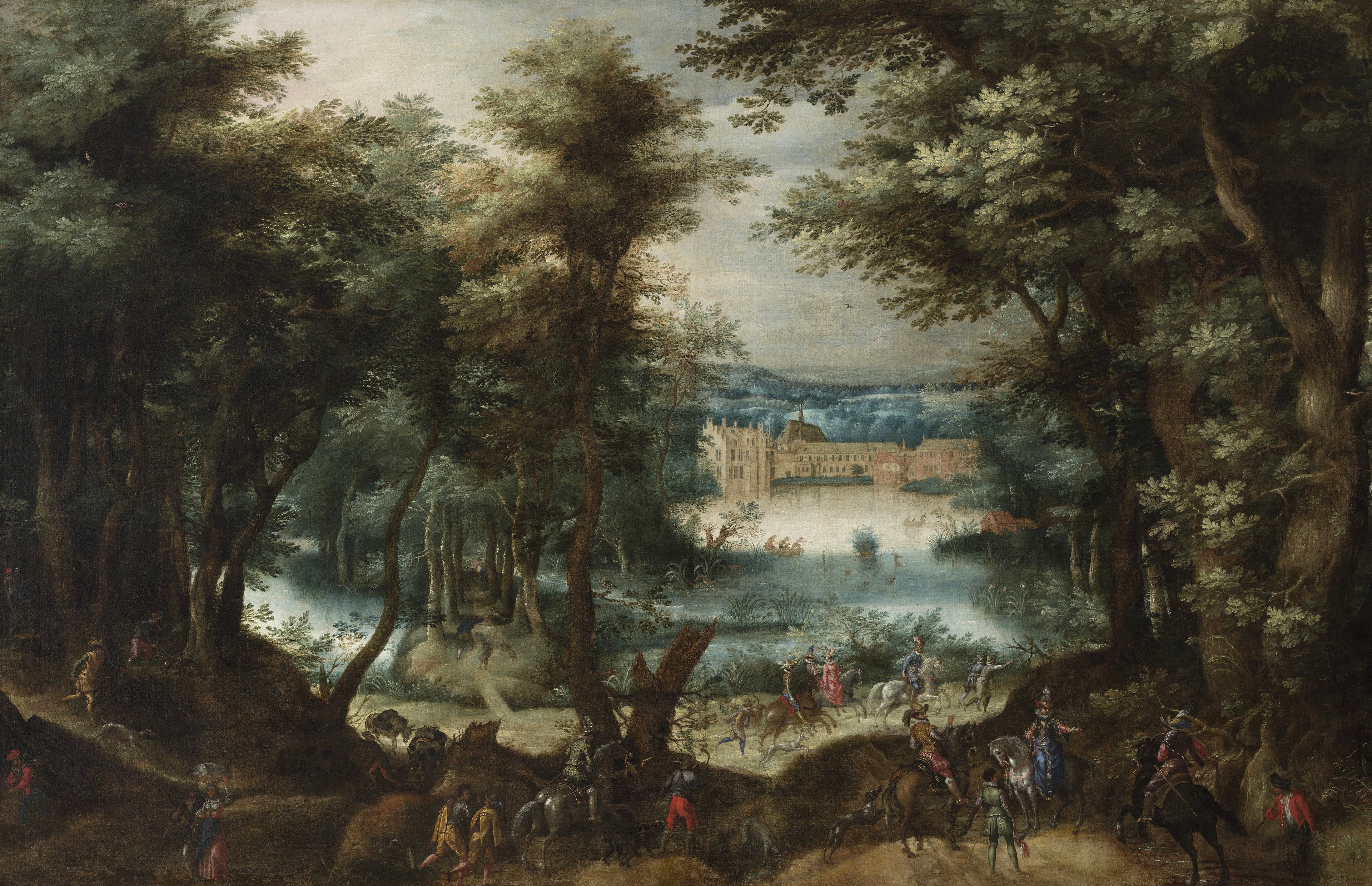
Around 1600, the forest landscape emerged as a genre in its own right in Flemish painting. It combined awe of dark, inaccessible forests with their importance as hunting grounds and retreats. Denis van Alsloot depicted the Forêt de Soignes near Brussels in his work.
Flemish forest landscape around 1600
Around 1600, the genre of the so-called forest landscape emerged in Flemish painting, whereby real observations were incorporated into fantastic compositions. From an early modern perspective, dense forests were veritable spaces of fear that eluded civilization's ability to tame them. Like the mountain landscapes painted in large numbers in Flanders at the same time, the impassable, menacingly dark forests made people appear small and helpless.
From the perspective of the time, however, the forest also had a positive significance: as a sovereign hunting ground, which meant that it was subject to the prince's power of disposal. Equally positive was its use as a spiritual retreat, a place of religious contemplation. The painting combines both aspects and refers to real conditions. It depicts the large wooded area south of Brussels, the Forêt de Soignes, the ancestral hunting ground of the sovereign. The large area contained several monasteries, such as the Augustinian priory of Groenendael shown in the background, which has now disappeared. Denis van Alsloot, a native of Mechelen, worked for the Brussels court of the Spanish governor couple, Archduke Albrecht VII of Austria (1559-1621) and Isabella Clara Eugenia (1566-1633). In numerous large-format landscapes, he captured real places in the wooded surroundings of the royal seat as the seasons changed. The figures were often provided by colleagues who were also employed at court, a collaboration of specialists that was typical of Flemish painting as a whole.
This painting could also have been part of a seasonal cycle. The painter, who also worked for the famous Brussels carpet weavers, certainly had in mind the older tapestries woven according to designs by Bernaert van Orley (c. 1491/92-1542), which depicted scenes of Maximilian I's court hunts against the backdrop of the Forêt de Soignes.
Text: Ulrich Becker